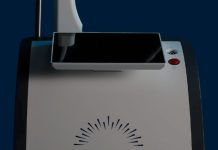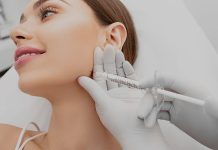AcelRx Pharmaceuticals DSUVIA Study
AcelRx Pharmaceuticals announced that an abstract, entitled, “Experience in Complex Outpatient Plastic Surgery Procedures Using Sufentanil Sublingual Tablets” was presented on Oct. 28, 2022 by Jeffery DeWeese, M.D., FACS, at Plastic Surgery The Meeting 2022 in Boston, Massachusetts.
Benefits of DSUVIA
The study hosted 324 patients that underwent complex plastic surgery procedures and found many positive benefits of using sufentanil sublingual tablets (SST), 30 mcg (brand name DSUVIA), including the ability to perform complex, extensive cosmetic procedures without general anesthesia, allowing a rapid discharge time.
“The lack of cognitive impairment, even after extended awake surgery, allowed for an easier discharge of patients compared to my experience when the same procedures are conducted under general anesthesia,” stated DeWeese. “Implementing SST into our protocols in our outpatient surgical center has resulted in the ability to perform complex, lengthy procedures without general anesthesia. Patients often prefer to avoid the cost and adverse events associated with general anesthesia and SST provides significant analgesia to allow a comfortable experience for these patients.”
Study Methodology
This “awake” surgery analysis was a prospective, single-group cohort that were 95% female and 15 to 81-years-old. The study was performed at Precision M.D. Cosmetic Surgery Center in Elk Grove, California. Cosmetic procedures included: liposuction, breast augmentation, breast reduction, brachioplasty, facelift, rhinoplasty, blepharoplasty and most significantly, abdominoplasty.
Patients were given 1 to 3 mg of oral lorazepam for anxiolysis/sedation and an IV was administers for antibiotic and preemptive antiemetic treatment only. A Sufentanil sublingual tablet (SST) 30 mcg (DSUVIA) was given sublingually, followed by an injection of local and/or tumescent anesthesia.
Surgery began 20 to 30 minutes after local anesthetic administration, allowing time for the sufentanil plasma concentrations to approach peak levels. Additional SST doses were given as needed, with a minimum of 60 minutes between dosing. Breakthrough discomfort or anxiety for patients was managed by inhaled 50% nitrous oxide, but that was rarely necessary.
Positive Conclusions
No unstable vital signs were reported and naloxone was not required by any patient for respiratory depression. Complications included shortening or modifying the procedure due to discomfort on rare occasions. Patient recovery time in the center averaged 19 minutes.
The study found that implementing the use of SST in this surgical center resulted in the ability to successfully perform complex, longer duration procedures without general anesthesia or intravenous (IV) opioids. The investigator also found that the absence of cognitive impairment after extended awake surgery, allowed for an easier and more rapid discharge.






